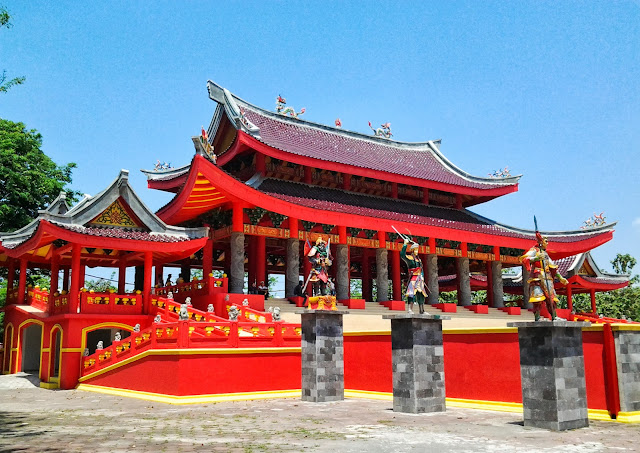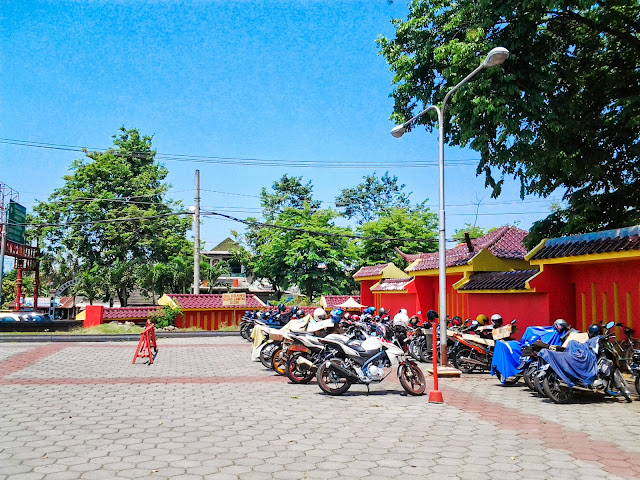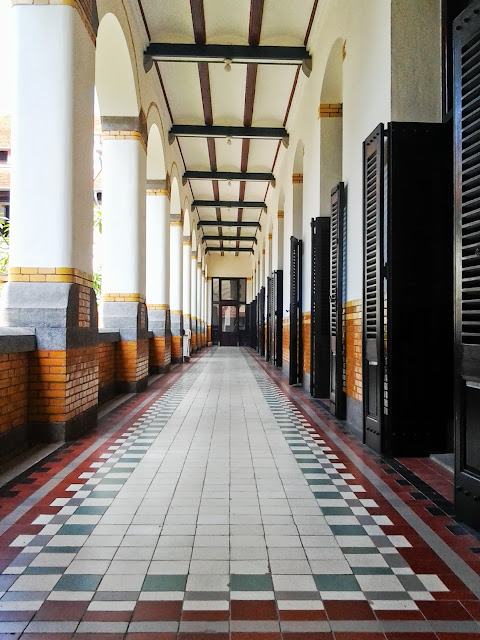SAM POO KONG TEMPLE
SEMARANG - CENTRAL JAVA
Building Stone temple Sam Po Kong is a petilasan, the former site of the first landing of a stopover and Moslem Chinese admiral named Zheng He / Cheng Ho. Located in the area Simongan, southwest of Semarang. Signs that show as former petilasan characterized by the discovery of writing keislamanan reads "silence let us listen to the recitation of the Qur'an with".
Building Stone called because its shape is a huge Batu Caves are situated on a rock., The Indonesian Chinese descent think it is a temple building - given shape to look like a china architecture temple. Now the place is used as a memorial and a place of worship or worship as well as a place for pilgrimage. For this purpose, in the cave was placed a stone altar and statues of Sam Po Tay Djien. Though admiral cheng ho is a Muslim, but by god they are considered. It can dimeklumi remember Confucianism or Tau considers people who have died can provide relief to them.
According to the story, Admiral Zheng He sailed through the Java Sea there is a sick crew, he ordered the anchor. He then docked to the northern coast of Semarang and establish a mosque on the waterfront which has now been turned into temples. The building now has been at the center of the city of Semarang on the north coast of Java always causes the mangalami silting caused the sedimentation so that the mainland will gradually growing wider towards the north.
That said, after Zheng He left the scene because he had to continue his voyage, many crew members who lived in the village Simongan and mating with the locals. They bersawah and farming that place. Zheng He gives lessons to cultivate and spread the teachings of Islam.





























































































0 comments:
Posting Komentar